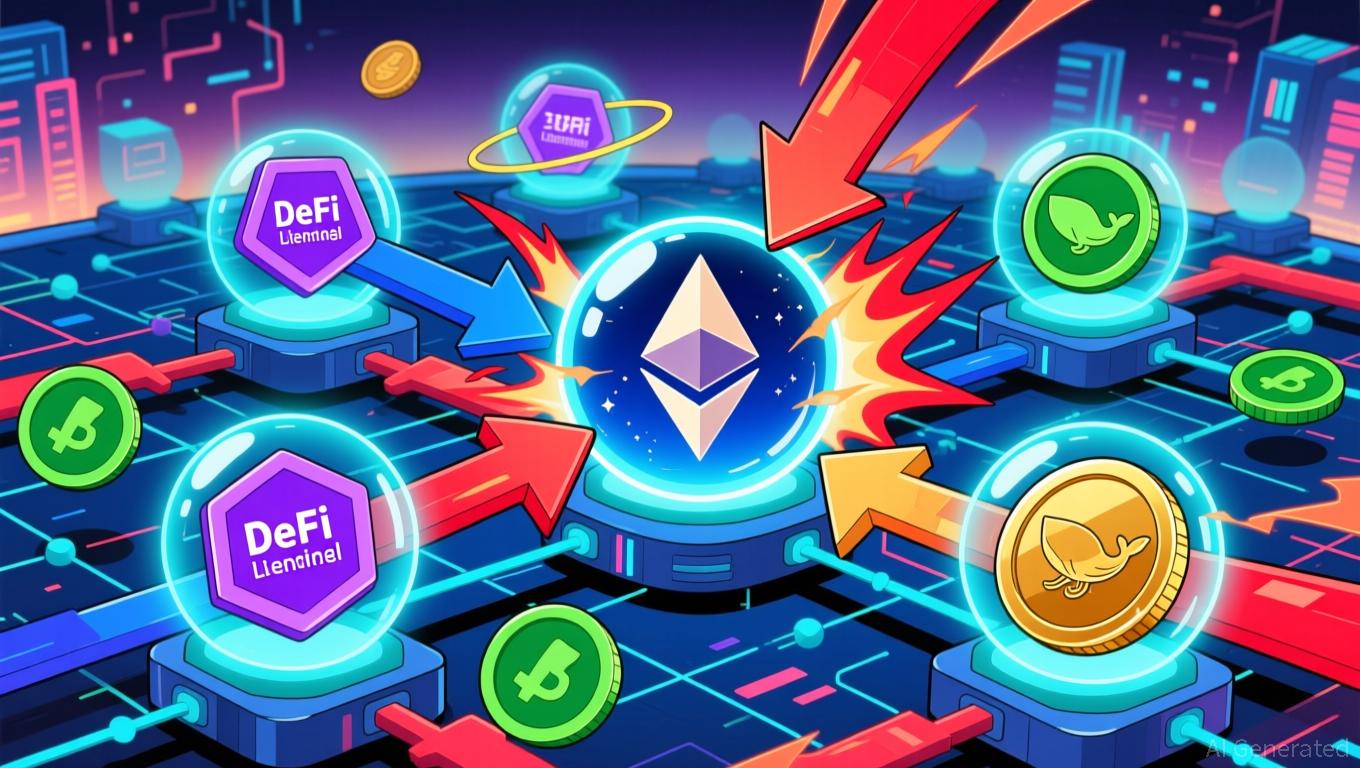U.S.-India Trade Agreement Strikes a Balance Between Strategic Interests and Energy Relations
- U.S. and India near trade deal to cut tariffs (15-16%) and reduce India's Russian oil imports, easing tensions. - Agreement aims to boost bilateral trade to $500B by 2030 while addressing U.S. concerns over India's Russian energy ties. - India seeks WTO-compliant steel/aluminum export terms, balancing U.S. strategic goals with its energy security priorities. - Deal could inject $250-350B liquidity globally, weakening the dollar and boosting crypto markets like Bitcoin .
Trade talks between the United States and India seem to be nearing a breakthrough, as President Donald Trump indicated that both nations are making headway toward a "fair deal" that could see tariffs lowered and tensions eased. During the swearing-in ceremony for U.S. Ambassador to India Sergio Gor, Trump mentioned that the two sides are "very close" to reaching a new agreement that would shift the current trade relationship, according to a
Despite steep tariffs, Indian exports to the U.S. have remained robust, rising 13.30% to $45.82 billion in the fiscal year’s first half, according to

Progress in the negotiations has been hampered by the U.S. government shutdown, which has led to staffing shortages and slower advancement, according to Scanx Trade. Nevertheless, both countries have completed five negotiation rounds since March, with Indian Commerce Minister Piyush Goyal describing the talks as "progressing well" even though some "sensitive issues" remain unresolved, as reported by a
At the same time, the potential agreement is drawing attention for its broader economic impact, especially on cryptocurrency markets. Experts believe that resolving the trade dispute, together with the expected conclusion of the U.S. government shutdown, could inject $250–$350 billion in liquidity into global markets, according to BeInCrypto. This influx, combined with lower trade friction, could weaken the U.S. dollar and lift risk assets such as
India’s shift away from Russian oil has been a central topic in the discussions. While India has cut back on purchases from Russia, it has not stopped them entirely—a point Trump has used to apply tariff pressure, as reported by
The next few weeks will be pivotal as both countries await official confirmation of the deal. For now, the U.S. and India are carefully weighing their options: Washington is looking to reduce its dependence on Russian energy and expand its economic reach in Asia, while New Delhi seeks advantageous trade terms without sacrificing its strategic independence, as reported by Cryptopolitan. The results could have far-reaching effects on not just U.S.-India relations, but also on global trade and financial markets, as observed by BeInCrypto.
Disclaimer: The content of this article solely reflects the author's opinion and does not represent the platform in any capacity. This article is not intended to serve as a reference for making investment decisions.
You may also like
Ethereum News Update: Institutions Eye Ethereum—Balancing Legal Challenges and Major Investor Accumulation
- Ethereum nears $3,400 amid rising institutional interest and whale accumulation, signaling potential rebound toward $4,000. - DeFi projects like Ethena and utility tokens RTX gain traction, highlighting Ethereum's role in capital-efficient infrastructure. - Legal uncertainties persist after MEV fraud trial ends in mistrial, exposing tensions between blockchain rules and traditional law. - Whale activity shows $1.37B ETH accumulation in November, contrasting with Bitcoin's weaker institutional demand. - A

U.S. Cryptocurrency Oversight Faces Uncertainty as Lawmakers Divide Authority Between SEC and CFTC
- SEC accelerates crypto regulation clarity, balancing innovation with investor protection via streamlined exemptions and jurisdiction boundaries. - Senate bill proposes dual oversight: CFTC regulates digital commodities (Bitcoin/Ether), SEC retains control over investment contracts. - Tax reforms enable crypto ETFs to stake assets, resolving legal uncertainties and boosting institutional adoption through staking rewards. - Bipartisan efforts aim to create cohesive U.S. crypto framework, though challenges
Bitcoin News Today: Square’s No-Fee Bitcoin Initiative Prompts Payments Sector to Reevaluate
- Square introduces zero-fee Bitcoin payments for merchants until 2027, challenging traditional credit card networks. - The initiative enables fiat-to-Bitcoin conversions and cross-border transactions, positioning Bitcoin as a functional currency. - Industry observers highlight cost savings for small businesses, with Bitcoin fees undercutting 1%-4% credit card rates, while competitors like Visa face regulatory pressures.

Systems Thinking in Supply Chains Influences Today's Leaders, Says Ford's Farley
- Ford CEO Jim Farley argues supply chain mastery is vital for leadership, citing Apple's Tim Cook and GM's Mary Barra as exemplars. - Supply chain disruptions highlighted by First Solar's earnings drop and Kimberly-Clark's $48.7B Kenvue acquisition challenges underscore its strategic importance. - China's resumption of Nexperia chip shipments reveals semiconductor supply chain fragility amid geopolitical tensions. - Farley criticizes traditional four-year degrees for entry-level roles, advocating technica